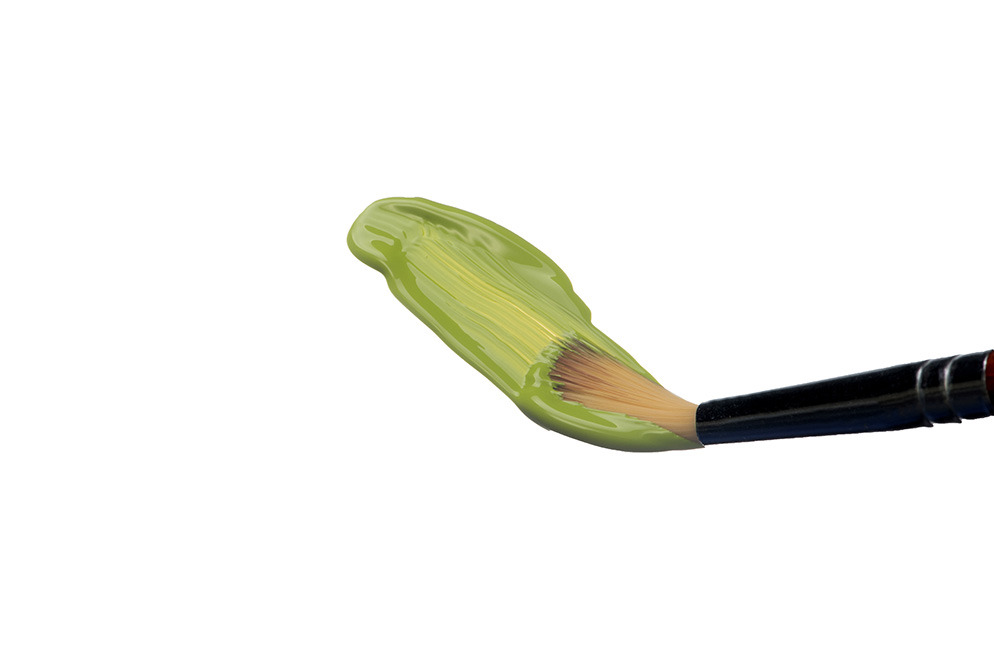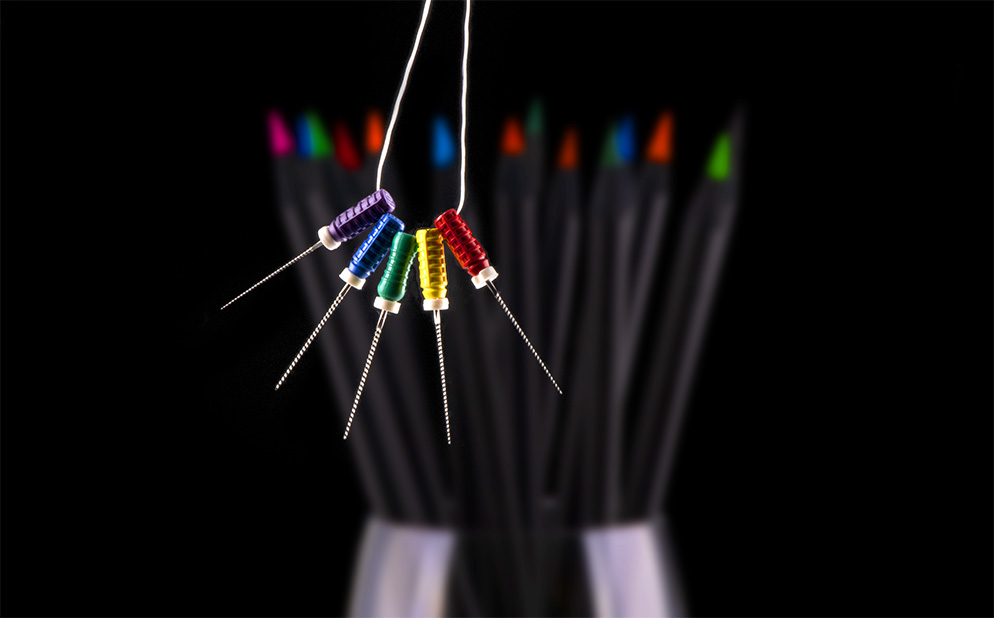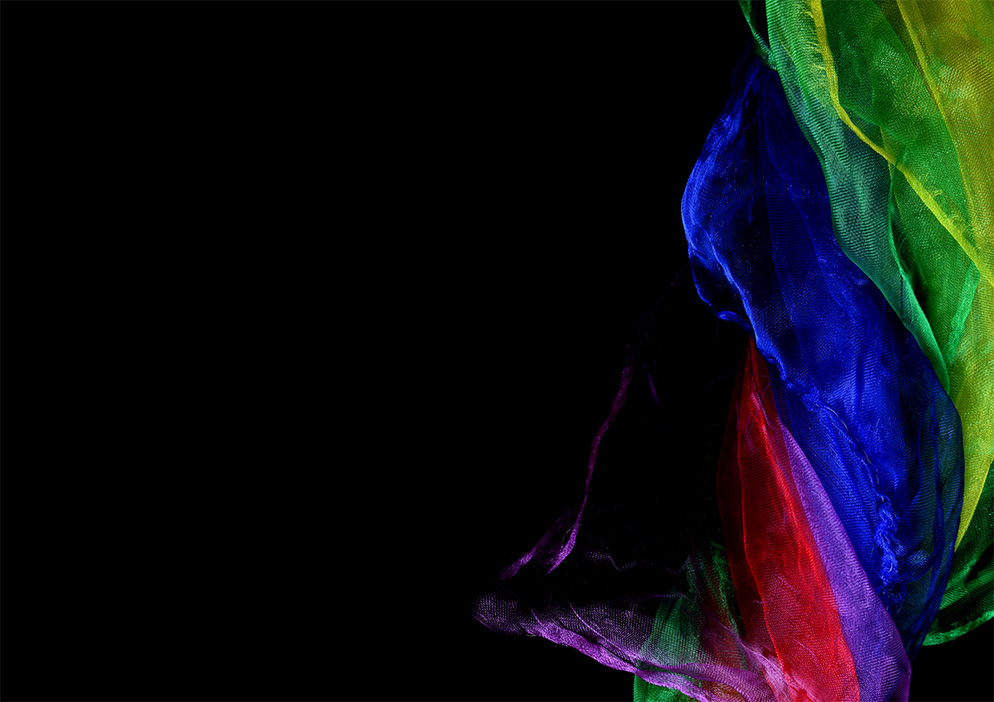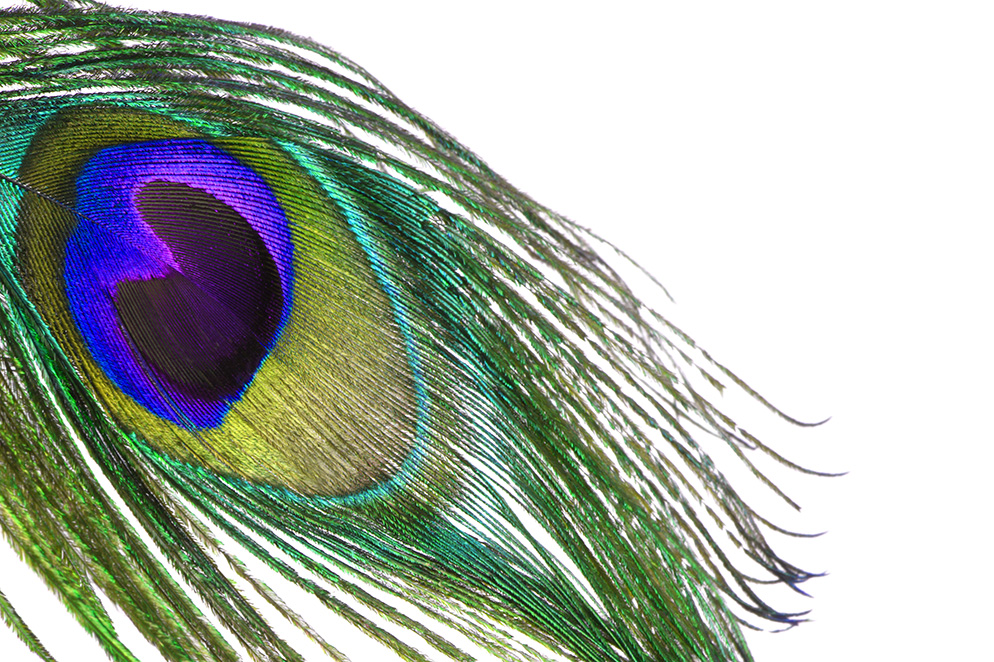Can a Dentist Help You Take Better Photographs? This One Can.
It took four hours for Dr. Ortiz to get the pencils to stack for this illustration of depth of field. "It was like building a house of cards," he says. D850, AF-S VR Micro-NIKKOR 105mm f/2.8G IF-ED, 1/60 second, f/32, ISO 320, manual exposure, spot metering.
Here's the first thing you should know about Dr. Miguel Ortiz, prosthodontist, dental photographer and educator: he is not a believer in doing something because that's the way it's always been done. When confronted by the lackluster results of the time-tested dental photography setup—a camera, a close-up lens, a ring light—and with a background of self-taught photography and an innate sense of graphic design, he thought, I can do better than this.
And he could...and did.
With imagination and trial-and-error experimentation, he devised his own ways and means, from the technical—designing a chair-side, dual-light system—to the educational—he now teaches artistic dental photography through courses, workshops, an instructional website and a book, Lit: The Simple Protocol for Dental Photography in the Age of Social Media.
Before we go any further, we want to assure you we're not going to attempt to teach you dental photography; that's Dr. Ortiz's job. What interested us about his story and his images were his graphic skills, the straightforward, colloquial, occasionally quirky style of his written presentation and his very real passion for the art of the craft.
So, let's visit the dentist.
"I wanted color, fluidity and dynamics—and the idea that the readers, the dentists, get to paint their own story, create their own picture," Dr. Ortiz says. D850, AF-S VR Micro-NIKKOR 105mm f/2.8G IF-ED, 1/200 second, f/32, ISO 320, manual exposure, center-weighted metering.
Soda water in a clear glass, a bit of a stir and in went the pencils. Many exposures followed. D850, AF-S VR Micro-NIKKOR 105mm f/2.8G IF-ED, 1/60 second, f/29, ISO 200, manual exposure, spot metering.
The Prime Element
From the title of Dr. Ortiz's book, you can guess that lighting is incredibly important to his style of dental photography.
"I think [light is] even more important for my niche because my niche are people who don't know any photography," he says. "They aren't even interested in learning photography—they just know they need it for their jobs." Their chief concerns when he started teaching were along the lines of "What camera should I use? What lens? What are the tools I need to get this job done?"
Those weren't the questions Dr. Ortiz wanted to hear. Few asked about making their photos better or how to use light to accomplish that. Dr. Ortiz's response was, "The cameras are amazing; micro lenses are [a] good [choice]. Now let's talk about light, because that's what will separate a bad picture from a good picture."
Although his book is of primary interest to dentists, there's a 50-page opening section devoted to the fundamentals of photography that will appeal to anyone who appreciates a straightforward approach and a conversational style. We particularly liked his take on shutter speed: it's not a speed, it's an interval—an interval during which light reaches the sensor. It's clear, concise information, and it comes at you from an interesting angle.
The third use of the color pencils, this time as the blurred background in a depth-of-field illustration. The dangling objects are files dentists use for root canals. We asked if they were threaded onto a piece of dental floss. "Most likely," Dr. Ortiz replied. D850, AF-S VR Micro-NIKKOR 105mm f/2.8G IF-ED, 1/60 second, f/5.6, ISO 200, manual exposure, spot metering.
Spreading the Word
You'll note that the phrase "in the age of social media" is part of his book's title, and that’s the subject of the book's closing section. Simply, dentists need to be media savvy; they are, after all, in business, and Facebook, Instagram, search engines and websites are all part of marketing.
But there's something else going on with dentists and social media, and that's peer recognition. "Many dentists became very famous on Facebook," Dr. Ortiz says. "They would put their work there and colleagues would notice. Instagram took it to a higher level [with] an easier way of showing pictures."
Dr. Ortiz's educational efforts are aimed at making sure that dentists are capable of the kind of artistic photography that will draw attention from patients and colleagues. He doesn't need to know their motivation. He's sure of one thing: they want to see how to do the more artistic work. "They want amazing shots," he says.
Actually, make that two things: he knows how to teach them to get those shots.
Taken during one of Dr. Ortiz's classes to demonstrate ideas for using composition, color, texture and negative space. Most of his photos are taken at the higher f/stops; f/32 is pretty common. "We're literally taking pictures two inches from the patient," he says. Dentists need to capture everything sharply." D850, AF-S VR Micro-NIKKOR 105mm f/2.8G IF-ED, 1/160 second, f/32, ISO 100, manual exposure, Matrix metering.
Let's talk about light, because that's what will separate a bad picture from a good picture.
Nylon scarves that Dr. Ortiz's wife, Colleen, a music teacher, uses in class. "She tosses them into the air to teach the kids how to move with the music," Dr. Ortiz says. D850, AF-S VR Micro-NIKKOR 105mm f/2.8G IF-ED, 1/60 second, f/29, ISO 200, manual exposure, spot metering.
The Graphic Element
There's another reason for our liking of Dr. Ortiz's work: his graphic sense and his willingness to trust his instincts when using it.
All but one of the images with this story are featured in his book, and while some illustrate techniques and setups, all are graphically compelling examples of what can be done when
a photographer breaks the mold of the old standbys and embraces the spirit of the image.
Think about it for a moment: a peacock feather on the cover of a book about dental photography. Now, picture Dr. Ortiz and his wife, Colleen, in a craft/hobby store. She asks, "What are we doing here?"
He says, "Finding the cover of my book." The feather was it—colorful, elegant and totally unexpected. "It's an abstract idea," he says, and a perfect one, as the feather becomes the surprising symbol of the book.
There are similarly striking images inside that tie directly to the techniques and set-ups for artistic dental photography, and there are also the associative images, like the peacock feather, that signal a photographer out to catch your eye and your attention—a photographer with faith in his own ideas. A book on dental photography with images that demonstrate the power of imagination? That's something different, and something photographers looking for new ideas can work with.
We kinda like that, too.
"No teeth, no camera, no lens on the cover," Dr. Ortiz says of this image of a peacock feather. Not the usual way to go for the cover shot on a volume on dental photography, but the right way for Dr. Ortiz. "I wanted people to have that image in their minds when they saw the book." D850, AF-S VR Micro-NIKKOR 105mm f/2.8G IF-ED, 1/100 second, f/32, ISO 200, manual exposure, Matrix metering.












